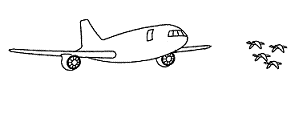Bird Strike Committee Proceedings

Bird Strike Committee-USA/Canada Joint Annual Meeting: 2nd (2000)
Date of this Version
August 2000
Document Type
Article
Abstract
Border Collie Rescue (BCR), in cooperation with the Dover Air Force Base, conducted a series of field trials to test the efficacy of utilizing radio-controlled models (“RCs”) (aircraft and boats) in dispersing several species of birds from troublesome locations around the Dover AFB environment. Results of these trials suggest that RCs can be used to effectively harass seagulls, raptors, ducks, and geese from difficult areas, though there are a number of limitations that must be taken into account when determining the value of instituting a harassment program utilizing RCs. Though use of Border Collies in its wildlife management program had eliminated the majority of bird hazards at Dover AFB, a few troublesome areas and species remained, particularly those birds that were located in areas inaccessible to the dog (e.g. large quarries with heavy machinery, soaring raptors). Radio-controlled aircraft were highly effective in dispersing large flocks of loafing seagulls, raptors soaring in thermals and passing through the airfield environment, as well as flocks of ducks and teal feeding and resting on open bodies of water. They were also partially effective at discouraging seagulls and geese from utilizing the airspace over the base and seagulls feeding on earthworms on runways and taxiways, though several environmental and operational variables determined success. Radio-controlled aircraft were entirely ineffective in dispersing Canada geese from open water. Coordinated effort with a radio-controlled boat, however, proved to be an effective means of eliminating the Canada goose presence from large bodies of water.

